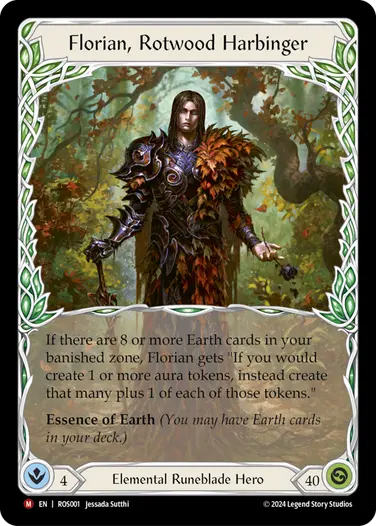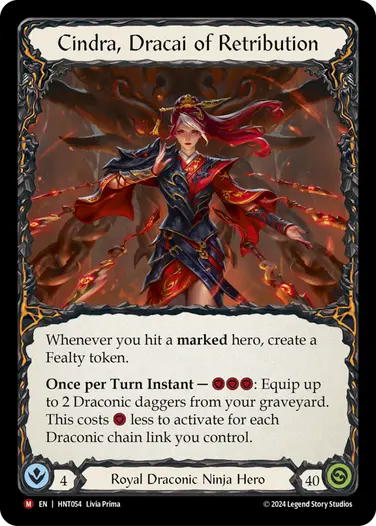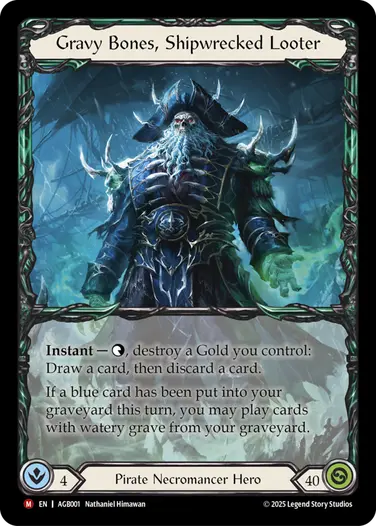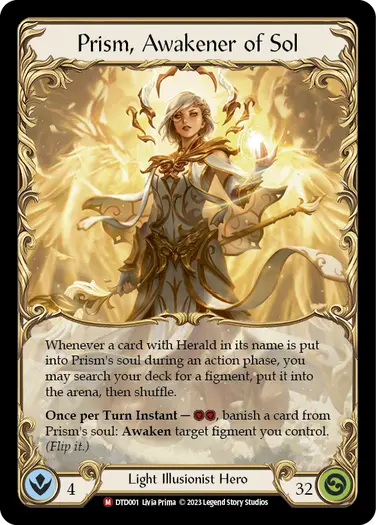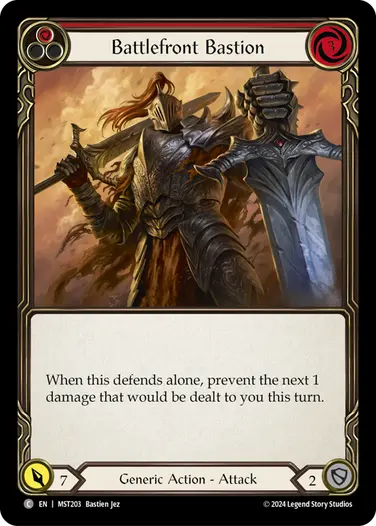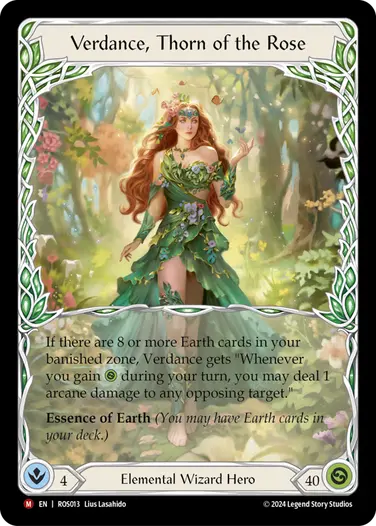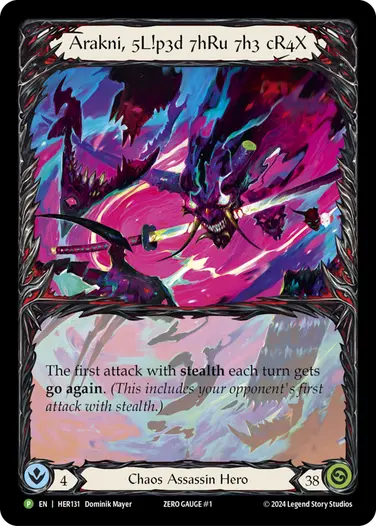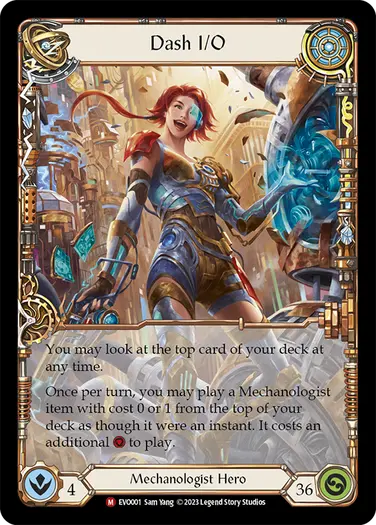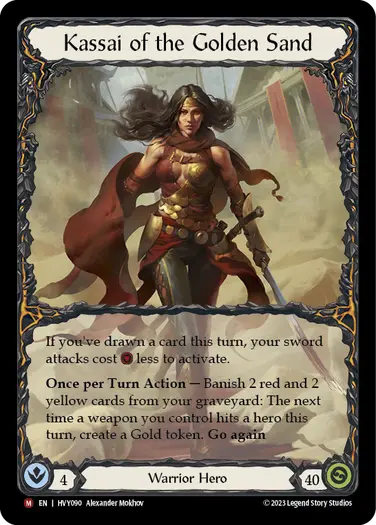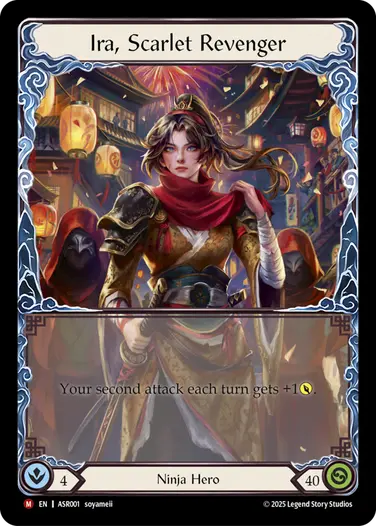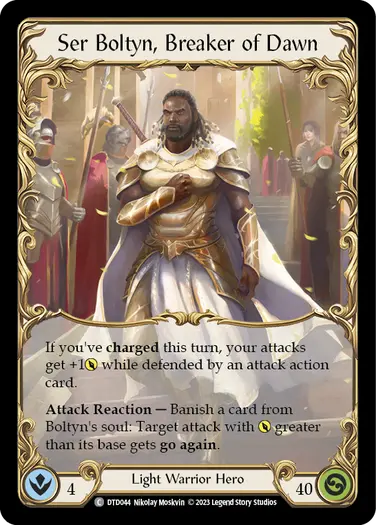Learn from the best with a monthly Masterclass lesson from renowned pro player Yuki Lee Bender. This month, Yuki breaks down how to analyze metagames and predict shifts, with a focus on the upcoming Pro Tour!
Since the release of High Seas, Classic Constructed has seen a diverse metagame that has shown shifts in which heroes are popular and successful week to week. Currently the metagame is starting to take shape with Gravy Bones, Cindra, and Slippy all tied for four wins, while Verdance and Prism are tied at three wins. However, as we look forward to the final week of Nationals and especially Pro Tour: Singapore, there still is no clearly defined best deck. For players participating in these events, accurately predicting which decks will show up and occupy the top tables is essential to preparing for the event, selecting a deck, and finding success.
In this article we will introduce a framework for how to analyze current metagames and predict upcoming metagames for events. Then implement this framework to try and predict what the upcoming metagame for Pro Tour: Singapore may look like.
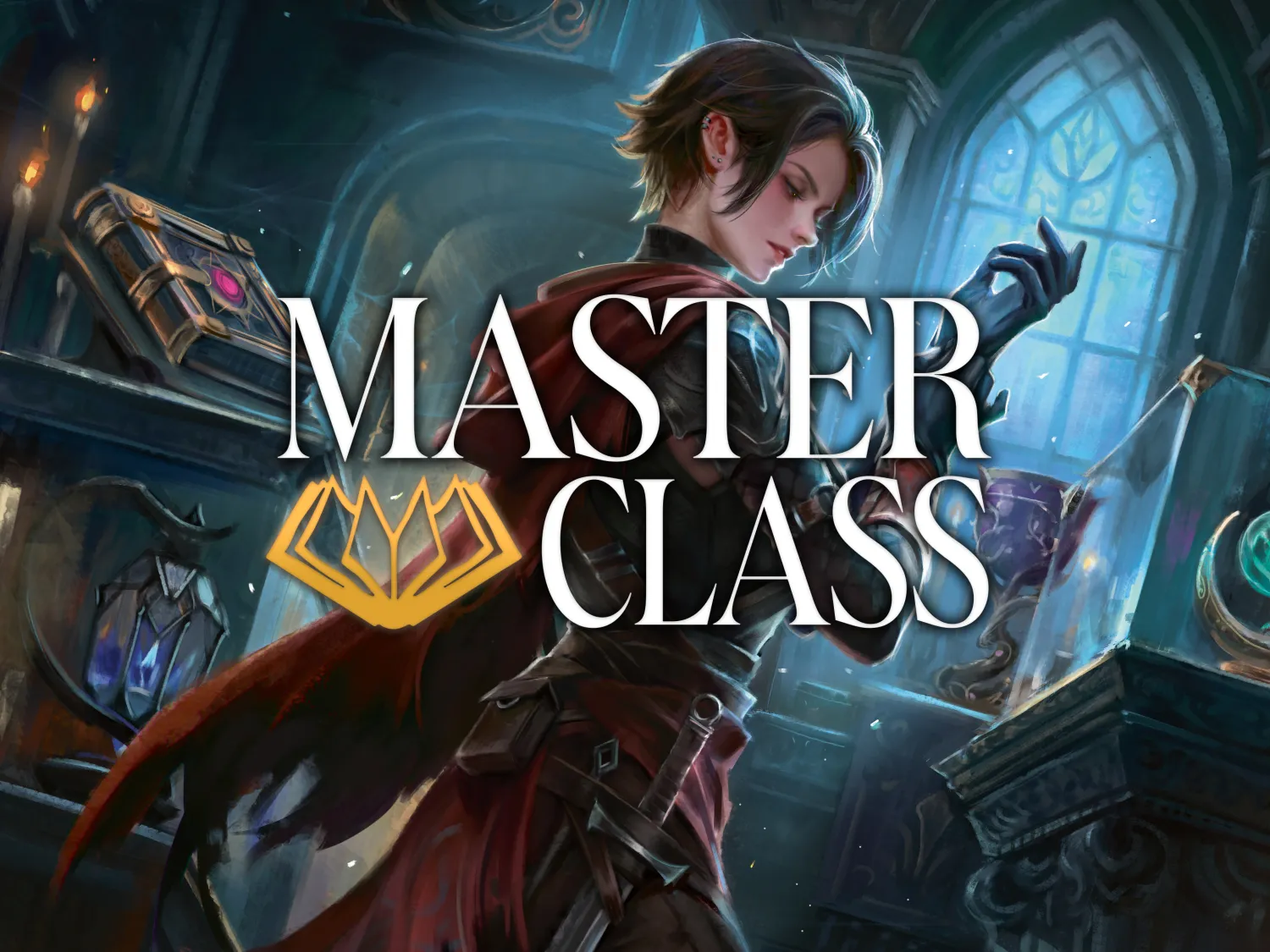
How Do We Predict Metagame Shifts?
Our basic process for predicting what a future metagame will look like involves five key steps which will be outlined here before we dive into each in more detail. First, we look to the most recent events, which decks seem to be popular and winning, and any changes that have occurred compared to previous weeks. Second, we can consider decks that seemed poorly positioned into the current metagame and may drop in popularity. Third, we consider decks which are well positioned and may gain popularity. Fourth, we consider how much we expect the meta to shift. Finally, we consider deck selection and any potential dark horse picks or meta calls that may be able to target the upcoming metagame.
The first place to look when analyzing a metagame is at recent results at big events. Most tournament players are quite tuned in to results and while you can’t expect the previous tournament to look exactly like the last one, it does inform what decks people will play. A good chunk of the player base will look to past events and play whatever the most winning deck is, while others may tailor their pick towards something that targets what was successful at last week’s tournament. Ideally when looking at recent results we want to look for a wide variety of data, but sometimes we also have to work with limited data sets, especially early in a season. Data to consider includes:
- What decks won the most?
- What decks were played the most?
- Are there any trends with decks gaining or losing popularity compared to previous weeks?
- Is there a clear best deck or group of best decks based on consistent win share?
It’s good to apply logic and reasoning to these results and to see if you can form a narrative on why certain decks are excelling or floundering. Keep in mind though that a single event or a single week of Nationals is still a low sample size. Sometimes while it may appear that there is a certain narrative or logic to the results, it could actually just be variance or noise in the data. Additionally, you may wish to listen to community sentiment, especially amongst popular content creators, to see if their views are aligning with your own narrative. Generally, the more community consensus there is on something the more likely it is to be true. However, even if a lot of the community seems to be sharing the same sentiment it’s always important to double check this potential narrative with your own testing/experience in key matchups. Additionally, you should look to see if the trend continues across multiple weeks making it far more likely to be true. Popular community sentiment often matches what shows up at the next event, but not always, so be sure to do your own analysis!
Next, we can look towards decks that seem to be losing meta share, or that may be poorly positioned into the decks that did well at the most recent events. The reason for starting with these decks, is that sometimes when a major player starts to fall out of favor, it can help us identify decks that could then be on the rise in future weeks. We recently saw a great example of this with Florian being a focal point of the meta at High Seas release, but after falling out of popularity post-United States Nationals the meta has shifted considerably.
Once we understand which decks might be losing meta share, it becomes easier to identify decks which might be poised for a breakout. The best way to identify these decks is by looking for decks which have good matchups into one or more of the top performing decks from last week, while paying special attention to decks who had a bad matchup into decks that may be falling out of favor. Sometimes certain heroes are pushed out by meta forces, but once things shift they can be a force to be reckoned with. The recent resurgence of Cindra following Aurora’s Living Legend and Gravy Bones' release is a great example of this.
After all the aforementioned analysis, it’s good to consider how much we expect the metagame to shift overall. This helps us understand if we think the next event will look mostly similar to previous events, or if we expect there to be substantial differences in hero representation. One factor is the number of decks that we expect to gain or lose popularity, but in addition to the quantity of decks we should also consider which decks are in question. Some heroes like Florian, Enigma, and Aurora have had a substantial influence on what decks in their respective metagames looked like, while other heroes like Zen when he hit Living Legend didn’t shift the needle very much at all. Generally, if the decks losing popularity gatekeep other decks, we can expect a bigger meta shakeup. The final factor we should consider when determining how much the meta will shift is time. The reasoning for this is simple, it takes players time to acquire cards and learn new decks, so an event a week from now is far less likely to fully adapt to meta forces than one a month from now.
After rounding out all our analysis, we should have a good idea of what we expect the upcoming tournament meta to look like. This often looks something like the five most represented decks and some predictions about the relative proportions of each of these. With this information we can look to see whether we would like to play one of these top performing decks, or to make a meta call and play something we believe to have good matchups into a substantial portion of the field. Generally, these decks may target the top deck and have a favorable matchup there while sacrificing some game into other meta players. Just make sure that if you are thinking about doing this, you aren’t giving up too much in your other matchups! Even if a deck is the most represented you usually will still play into a wide range of other decks. A big part of the deck selection process here relies on testing and practice to identify which deck might be the best choice for you leading into the event.
Nationals Analysis - Week 1 and 2
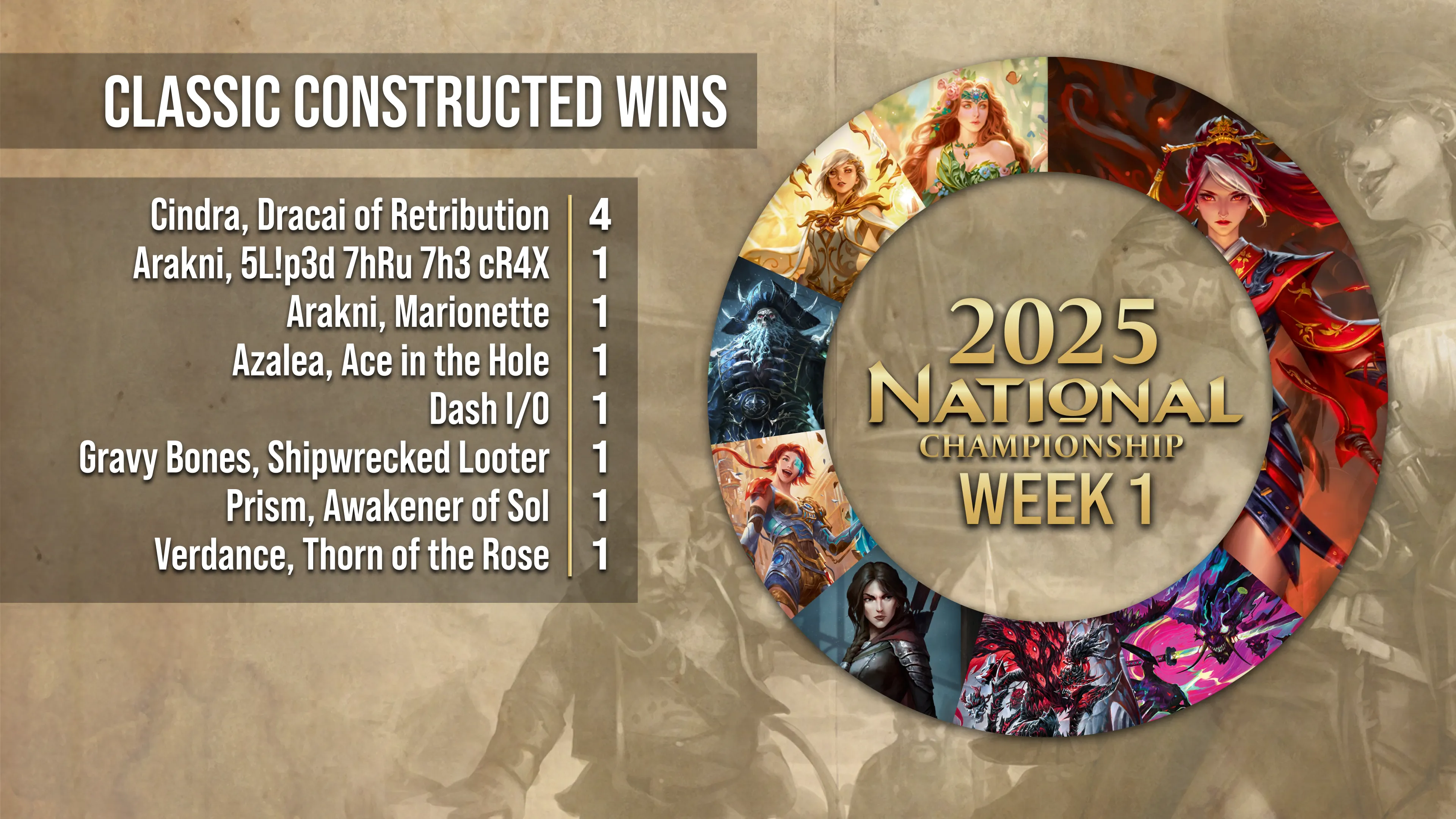
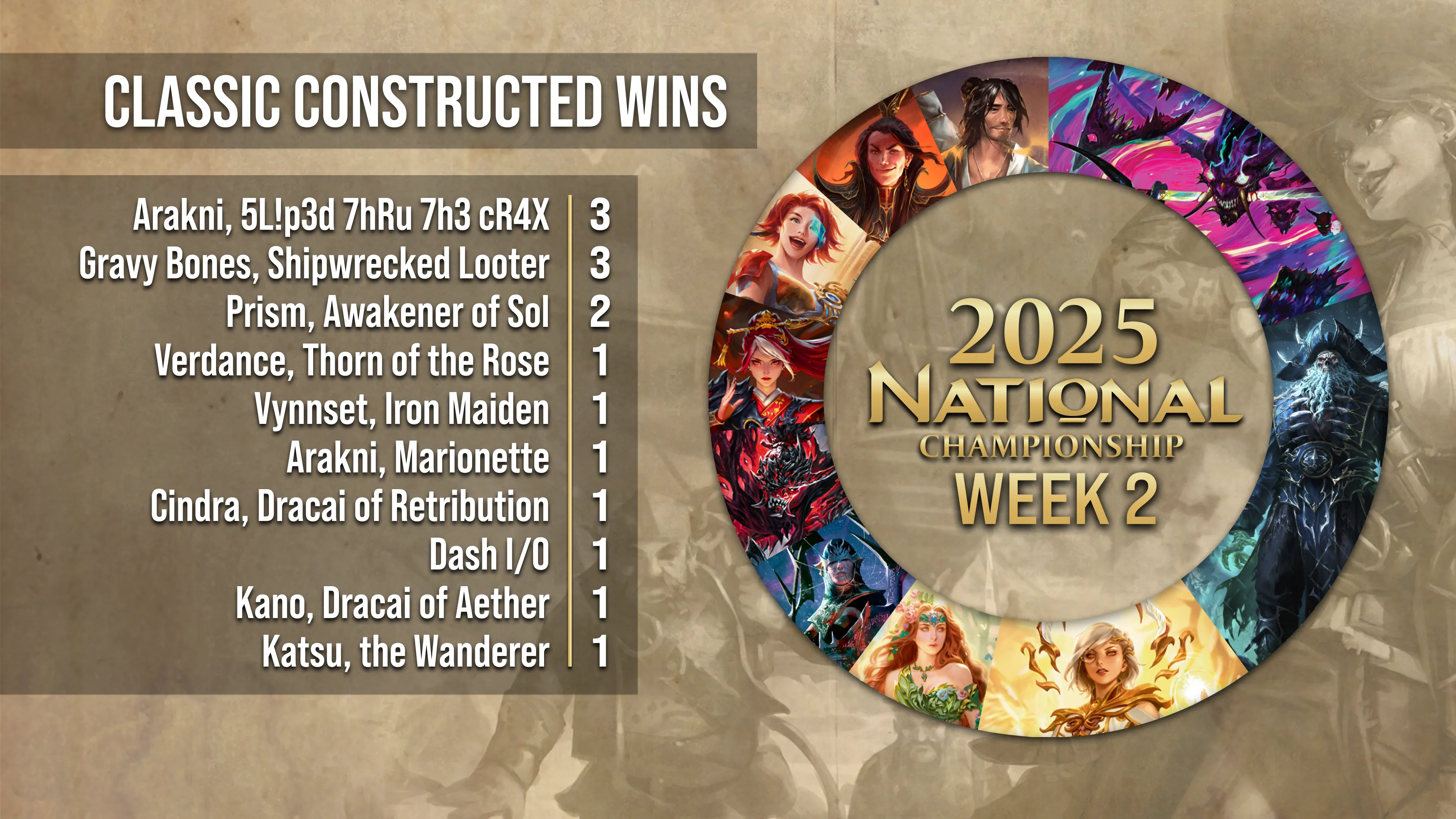
For recent results we can look at the current Nationals season as well as the Battle Hardened in Houston, but first we should outline a few caveats. Keep in mind that even with multiple Nationals, from a statistics standpoint this is still a relatively small sample size. This lack of certainty is further emphasized when you consider that Booster Draft is a big factor in the results. Because of this, one particular week is not necessarily indicative of a shift in the meta, but multiple weeks of similar results could indicate a trend. Additionally, wins are not the only metric to measure success by. Ideally, we would analyze things like play rate and number of Top 8's as well, but this information is challenging to tabulate across such a wide range of Nationals events, so we will make due with what we have. With these points in mind, we can begin to analyze the current metagame.
In Week 1 there was a big rise in Cindra as a deck that is positive into Gravy Bones, Florian, and Verdance, all of which were quite popular at United States Nationals on set release. In Week 2, we’ve seen a few big shifts; namely a rise in Slippy, Gravy Bones, and Prism, with Cindra finding less success. One possible way to interpret these results is that Slippy and Prism gained popularity due to strong Cindra matchups while also having tools to deal with Gravy Bones. Gravy’s growth in win share could be attributed both to continued refinement of Gravy Bones decks and perhaps less Cindra in the winner’s metagame due to the presence of Slippy and Prism. While this all sounds very logical and definitely could be true, it’s important for us to be critical of this potential narrative, as failing to recognize a meta player is a large pitfall.
As someone who has watched a lot of streams from the weekend, I know that Cindra appeared to be amongst the most popular heroes and, despite only winning one event, still had quite a few Top 8 placements. Additionally, Cindra has the option to improve her Prism matchup by including more 7-power poppers, and the Slippy matchup with Shelter from the Storm and other defense reactions. For these reasons, I’m not ready to write off the Dracai of Retribution just yet, and think we could see her start to adapt to these other meta decks and regain some of her win share. We will have to keep our eyes on Week 3 of Nationals to see how Cindra’s representation and results look to have a true feel for how present she will be in Singapore. But so long as she puts up decent results this weekend, I would still expect her to be a major player at Pro Tour in two weeks.
Currently there is no clear frontrunner for best deck in format from number of Nationals wins, but Gravy Bones, Cindra, and to a lesser degree Prism, Verdance, and Slippy all seem like strong contenders. Whether we have a clear best deck, or a group of top decks which keep each other in check remains to be seen and will likely come into focus at Pro Tour: Singapore. However, currently things feel quite diverse and healthy and it seems like there are quite a few good deck choices available to players for Singapore.
Decks that Might Lose Meta Share
Prism on paper looks like a solid contender with game into Gravy Bones due to being able resolve on hits on allies, and she has solid game into Cindra and Slippy due to traditionally low popper counts. However, many recent winning lists for all three of these heroes have been playing a higher density of 6/7-power poppers, and with Prism’s success I expect his trend to continue. Prism is still a powerful hero and one I suspect to still be present and even potentially see some results, however I think her weakness to poppers is quite exploitable and will cause her to struggle to take down the entire event and probably cause her to dip a little bit in representation at the Pro Tour.
Another hero who deserves a bit of extra attention in our analysis is Verdance. She won United States Nationals and has picked up a win in both Week 1 and 2 while also having a solid representation. Overall, Verdance is quite a powerful hero with game into a lot of the field, but in my experience can struggle to handle Gravy Bones' horde of allies. Additionally, while she has game into Cindra, it’s not exactly a favored matchup either. So, while the Earth Wizard is a fine choice, she doesn’t exactly seem like a fantastic one either. Unless Verdance players can find a way to adapt and significantly improve her Gravy Bones or Cindra matchup, I expect her to fall a little bit in popularity as we head towards Pro Tour: Singapore.
Keep in mind that while these decks may decrease in popularity, that doesn’t mean they won’t show up at all. Some players are extremely dedicated to both Prism and Verdance, and if players write these heroes off and start removing tech cards for them, they could still be very strong choices for the event.
Decks that Might Gain Meta Share
Now that we’ve got a feel for what seem to be the most popular decks; Slippy, Gravy Bones, Cindra, and to a lesser extent Verdance and Prism, we should also consider other heroes who are potentially well positioned.
Gravy Bones is already a popular deck, but one I consider to really hit his stride at Pro Tour: Singapore. The deck is clearly powerful, and Gravy Bones has plenty of results to prove it, including two Battle Hardened Wins, four National Championship wins, and a Top 8 appearance at Calling: Bologna. Factoring in that the hero was released only a month ago and lists continue to be worked on and refined, I have no questions that Gravy Bones will be on full display at Pro Tour: Singapore, featuring the most refined lists we have seen to date. It remains to be seen whether Gravy Bones is just one of many strong decks or truly claims the throne as the top of the meta, but I suspect that this will be a focus for players as they move towards Pro Tour: Singapore. Given his current trajectory, I wouldn’t be surprised to see him as the most represented hero at the tournament.
While Gravy Bones is clearly a hero with a target on his back, he does have weaknesses due to his allies being very vulnerable to on-hit effects which the Ninja class is especially good at exploiting. We have seen Cindra rise as a primary counter to Gravy Bones due to her ease of splitting up her damage to clear allies, Mask of Momentum to draw cards, and heavy pressure to shorten the amount of time Gravy has to establish a board. For this reason I expect that we will continue to see Cindra grow in popularity towards the Pro Tour, despite a weaker win rate during Week 2 of Nationals.
Slippy is a hero we have seen pick up three wins in Week 2 of Nationals and on paper this makes a lot of sense. Slippy has easy access to go again and disruption to pressure Gravy Bones while managing allies, and Assassin as a class generally plays favorably into decks that lack defense like Cindra. Additionally, Slippy has game into both the other meta players, Verdance and Prism. With Florian also mostly out of of the picture, it’s not clear to me what matchups Slippy doesn’t want to see. All of these factors point towards Slippy being quite a strong choice, and one that I think will gain a fair bit of popularity as we head towards the Pro Tour.
Finally, while Verdance losing metashare may theoretically open up space for some slower strategies that can’t compete with her combo, my current read is that most of these decks also tend to struggle with Gravy’s allies. So despite Verdance being a bit of a gatekeeper, I don’t expect a downturn in her popularity to be enough to prop up other decks right now.
Overall I expect the metagame to continue to shift towards Cindra and Gravy Bones being the two most represented decks at the Pro Tour, with Slippy being a somewhat close third.
How Much Will the Meta Shift?
Based on our prior analysis, it does look like there will be a moderate amount of metagame churn; the format is still quite young and we haven’t yet seen a consistent metagame week to week. However, it does feel like the rate at which the metagame is changing is starting to slow down and we are beginning to see a top echelon of decks be established in the form of Gravy Bones, Cindra, Slippy, Prism, and Verdance, although the exact hierarchy of these decks remains unclear. Due to the uncertainty in the exact shape of the metagame, I think there is still potentially room for new contenders to enter the metagame.
Meta Calls
For the upcoming metagame at Pro Tour: Singapore I expect Gravy Bones and Cindra to still be the most represented decks, with Prism and Slippy being roughly tied after that. Verdance I think will still be represented, but to a much lesser degree than Prism and Slippy. Following these predictions, in order to be a good meta call for this event, you probably want to have solid matchups into Gravy Bones and Cindra, with at least some game into the remaining heroes in the field. Of course, all of these top decks we’ve been discussing are excellent choices, but here we also want to consider other potential contenders that might be able to have a good showing in Singapore.
Dash I/O is a hero who has won two National Championships and may also be a bit of a dark horse for this metagame. Dash I/O excels at racing other aggressive decks that might try to target Gravy Bones and can potentially exploit Gravy Bones’ non-blocks and slow set up time with heavy pressure and Boom Grenades. Additionally, due to having a fast clock, extra action points, and easy poppers in the form of Throttle and Maximum Velocity, she has also enjoys a solid Prism matchup. Dash I/O traditionally struggles into Earth heroes, but with Verdance potentially on the decline and Florian falling out of favor, some of her worst matchups have recently left the metagame. Furthermore, Guardians are also mostly absent from the metagame, meaning Dash I/O's only remaining predator is Assassin. Due to the recent popularity of Slippy, this does make Dash I/O potentially a risky pick, but should she see the right matchups, or should Slippy start to lose popularity, she could be a real contender in Singapore.
Kassai saw a quick rise to the top of the meta upon release in Heavy Hitters before mostly being absent due to Enigma’s presence over the metagame. However, with the Mystic Illusionist recently hitting Living Legend and Earth on the decline, Kassai once again is a hero on the table and even had a Top 8 appearance at my very own Canadian National Championship. Kassai has quite a bit of game into Gravy Bones due to her ability to gain Copper off allies to fuel a big Blood on Her Hands turn, while also being solid into Cindra and Slippy. The main predators to Kassai are Wizards and to a lesser degree Prism, but following the logic that those heroes might be on the decline, I think Kassai could be quite well positioned for the Pro Tour.
Another hero worth considering is Flesh and Blood’s first hero, Ira, who has a brand new Armory Deck coming out the week before Singapore. Traditionally Mask of Momentum is a very strong answer to allies but she also has the option of running a new headpiece, Iris of the Blossom, which is capable of searching her deck for Whirling Mist Blossom which can easily be used to draw two cards on demand against Gravy Bones' allies. At the time of writing, it's hard to properly gauge how large of a player she will be for Pro Tour, but it wouldn’t surprise me if the Scarlet Revenger made a splash at Singapore, especially considering she already has quite a solid gameplan into Gravy Bones before receiving additional support.
Finally, Boltyn is a hero that I think is quite under-explored in the current metagame and was my personal choice for Nationals this year. While I did not Top 8 with the hero, I do still think he is a good choice for the meta. Boltyn’s appeal is that he has a solid Gravy Bones matchup, a favorable Cindra matchup, and a favorable Prism matchup, while still being competent into Verdance and Assassin. The biggest problem for Ser Boltyn is in the form of Guardians and other Warriors, but with neither of these classes being especially popular, Boltyn may be a real dark horse for this event should someone be willing to invest the time to master him. Although his lack of popularity in recent history may prevent him from seeing much adoption at the Pro Tour.
Other potential meta calls almost certainly exist, and Pro Tour competitors around the globe will be searching for either the top deck in the format or potentially the perfect unexpected angle of attack to take the whole tournament by storm. All eyes will be on Singapore to see exactly how the High Seas Classic Constructed metagame will ultimately shake out.
While this article is largely focused on the upcoming Pro Tour, my hope is that it should give you the tools to analyze and predict metagames for your own upcoming tournaments in the future.
